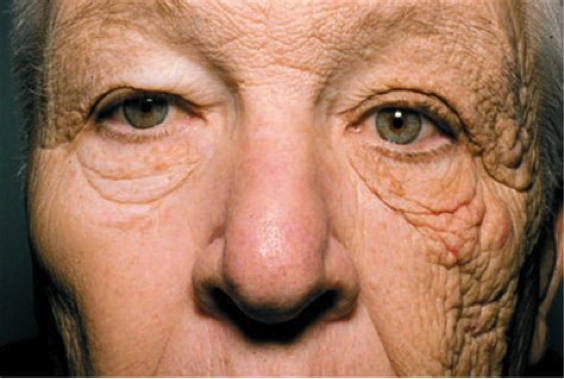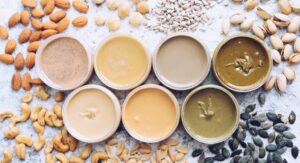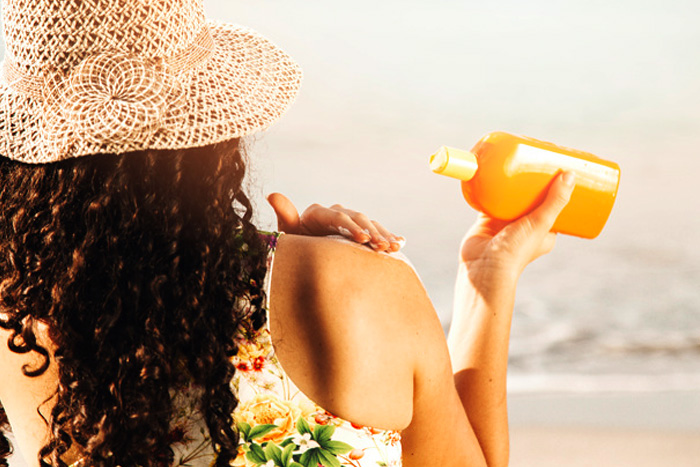How does sun protection play a part to prevent skin cancer and photoaging?
Sun protection is important in preventing skin cancer development and photo-aging. Photo-aging is a premature skin aging resulting from prolonged and repeated exposure to sunlight. The common clinical features of photo-aging include fine lines and coarse wrinkles, and loss of elasticity.
To protect our skin from aging and the possible skin cancer development, sun protection is the first essential step.
What are the different types of UV radiation?
UV radiation is transmitted in three different wavelengths – UVA, UVB and UVC. UVC does not penetrate the Earth’s atmosphere, so we only need to protect our skins against UVA and UVB.
UVA radiation is associated with skin ageing. UVA affects the elastin in the skin and leads to wrinkle and sun-induced skin ageing such as coarse wrinkles, brown pigmentation and skin cancer. It can penetrate window glass and penetrates the skin more deeply than UVB. UVA protection in a sunscreen will help defend the skin against photo-ageing.
UVB causes sunburns and skin cancer, but it is mostly blocked by regular window glass. It is also involved in the vitamin D production in the skin. UVB is the strongest in summer and in the middle of the day.

He drove a truck for 28 years with the windows closed, the sun shining through the window and hitting his left side. His right side received only indirect sunlight – the difference in skin aging is massive.
What are some of the ways we can protect ourselves from the Sun’s UV rays?
- Wear sunscreen with broad spectrum coverage (with both SPF and PA system). Reapply sunscreen at least every 80 minutes, or more often if you are sweating or swimming.
- Take oral sunscreen pills
- Wear sun protection clothing, hats and sunglasses
- Seek shade and avoid sun exposure at peak times (10am-2pm).
- Add UVA tints to windows that you go near frequently, such as at home or in your car.
How do sunscreens work?
There are two types of sunscreens in the market: chemical and physical sunscreens.
Chemical Sunscreen | Physical Sunscreen |
|---|---|
Helps to absorb harmful UV radiation and convert the energy back out as infrared | Helps to reflect UV radiation away from the skin. |
Might be more irritating | Less irritating and a better fit for sensitive skin |
Water resistant formulas | More moisturizing |
Easier to blend on skin; does not leave white cast | Difficult to fully blend into the skin, for example, zinc oxide will leave white cast on the skin |
What does SPF mean?
SPF stands for sun protection factor. It tells you the sunscreen’s ability to protect you from erythermal UV which causes redness and burning. It is estimated that about 80-91% of erythermal UV is UVB and the remaining is UVA.
Generally, the higher the SPF, the higher the protection against erythemal UV. It will tell you how long the UV rays will take to redden your skin when you are using the sunscreen compared to the amount of time it takes without any sunscreen. So, if you use an SPF 15 sunscreen, it would take 15 times longer to cause reddening of your skin than without any sunscreen.
However, it is important to remember that regular reapplication of sunscreen is still necessary as no sunscreen can block 100% of the UV rays.
What does PA system mean?
Protection Grade of UVA (PA) system is particularly used in Asian brands, to measure the UVA protection in sunscreens.
How do we apply sunscreen?
- The ‘teaspoon rule’: approximately 1 teaspoon to neck and face, a total of 2 teaspoons to front and back torso, 1 teaspoon to each upper extremity and 2 tablespoons to each lower extremity
- Timing: sunscreens should be applied 15- 30 minutes before sun exposure to allow the formation of a protective film on the skin. Reapplication at least every 2 hours are necessary.
Other fun fact: Vitamin D
There has been concern that sun protective measures could result in vitamin D deficiency. However, there is no scientific evidence that sunscreen use significantly suppresses vitamin D production. In patients who need to adopt strict sun protection measure, oral vitamin D supplementation is a safe and inexpensive alternative.
Want to find out more?
Unity Pharmacy carries a range of sunscreens for your different needs. You can visit your nearest Unity Pharmacy and approach our pharmacists or staff on duty for more information.
Reference
- Gordon, J. R., & Brieva, J. C. (2012). Unilateral Dermatoheliosis. New England Journal of Medicine, 366(16). doi: 10.1056/nejmicm1104059
- Norval, M., and H.c. Wulf. “Does Chronic Sunscreen Use Reduce Vitamin D Production to Insufficient Levels?” British Journal of Dermatology, vol. 161, no. 4, 2009, pp. 732–736., doi:10.1111/j.1365-2133.2009.09332.x.










